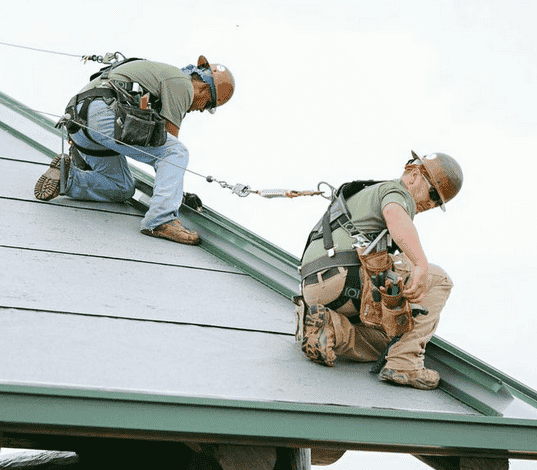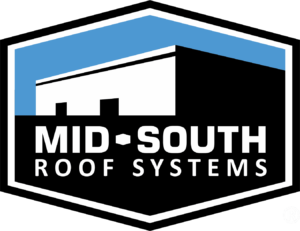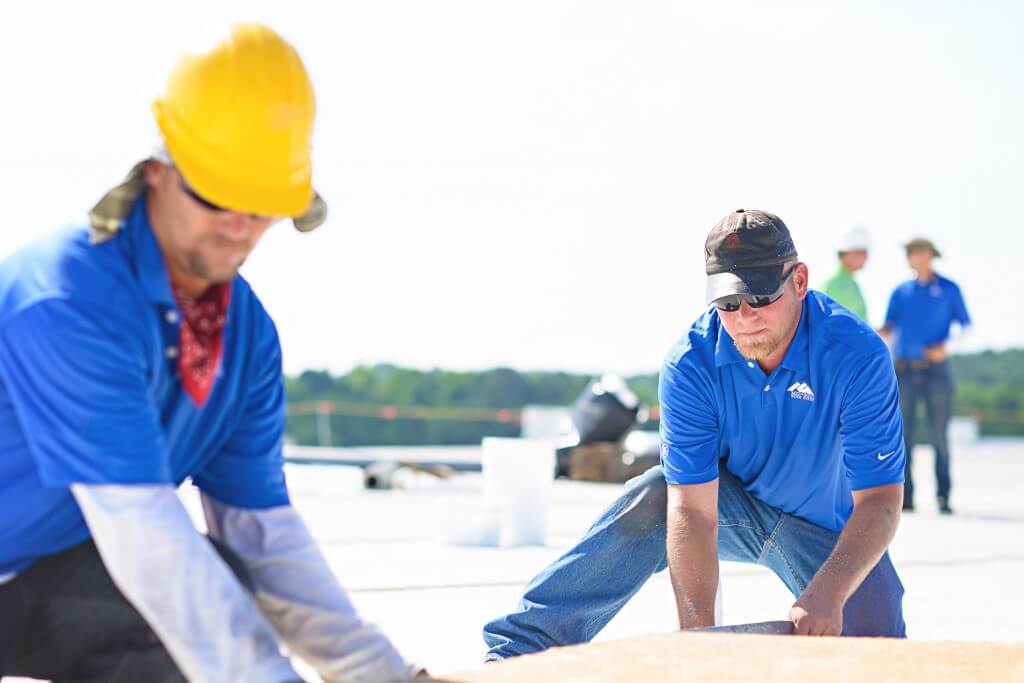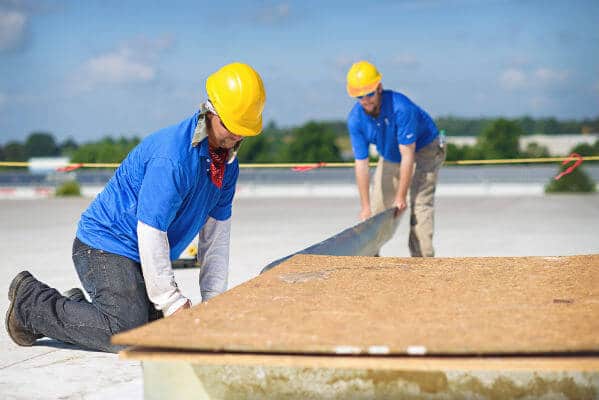Safety on the Roof Requires Planning on the Ground


A roofing company with a stellar safety record can earn a contract even when their bid isn’t the lowest. Why? Because roofers with strict safety practices protect not only their employees, but also the building owners and general contractors against legal exposure from accidents and injuries.
What’s The Average RIR?
Roof safety starts on the ground, and a roofing contract is only awarded after a comprehensive pre-qualification process that weeds out companies with spotty records and a history of injuries, accidents, or violations.
Just like a bank looks at an applicant’s credit history before granting a mortgage, a general contractor examines a roofer’s recordable injury rate (RIR). The RIR, also called frequency rate, is a number that reflects how many injuries a company sustains in a one-year period per hours worked. Generally, the industry-standard is 4.0. Anything higher and you will likely be denied work simply for your safety record alone.
But it’s more than just a mathematical formula. Safety has to be a guiding philosophical principle.
Meeting and Beating OSHA Standards
The Occupational Safety and Health Administration (OSHA) has strict rules and standards regarding every aspect of construction and roofing. But a top roofing company should maintain standards that go beyond those of government regulators.
For example, they might choose to use a personal fall arrest system (PFAS) instead of the warning line and monitor system in certain situations even when OSHA does not require it.
Different Jobs, Different Safety Procedures
Safety procedures are not one-size fits all. After the pre-qualification process, a safety supervisor should visit the location to physically identify any hazards and come up with a site-specific plan.
If the project involves an occupied building (which is frequently the case) it’s necessary to cover live power lines or de-energize the building. And if there are exposed openings or unprotected skylights, a smart roofer will take the extra steps necessary to protect not only their own workers, but the building’s occupants as well.
When a roofing contractor has taken the time to get to know the hazards, they can identify the necessary preventative measures and what those measures will cost, making the final bid much more accurate.
At Mid-South, we like to say that any roofer can get up on a roof – what distinguishes them once they’re up there is the quality and integrity of their employees. Proactive safety policies protect workers and enable them to do the best work possible, year in and year out. The depth of their expertise, in turn, allows roofing contractors to build long-term business relationships and deliver roofs with craftsmanship and care.
LIKE WHAT YOU JUST READ?
Sign up for our newsletter to get fresh articles, updates and more!
Assess, Report and Decide: Get to Know Your New Building’s Roof
If you’re considering buying a new building, the very first item on your list should be to get an assessment of the roof’s condition. This analysis can prevent surprises down the line and—if the roof needs work—it can have a dramatic effect on the price you wind up paying for the building.
Why You Need A Roofer Onsite When You Install Your HVAC System
It’s common to place the heating, ventilating and air conditioning (HVAC) systems for large buildings on the roof. A successful rooftop HVAC installation usually involves the collaboration of an entire team of workers, so that issues related to the roof, structures, electrical and HVAC can be discussed beforehand. If an HVAC system is not coordinated…


